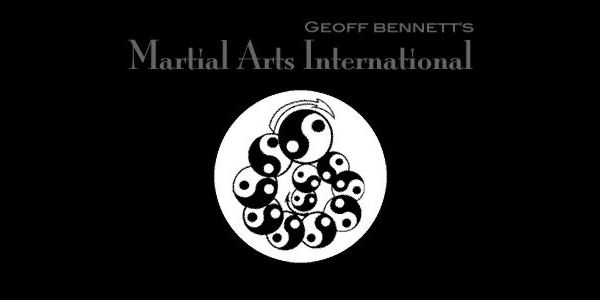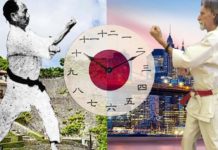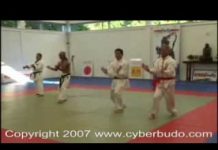When many people see the name of the system I study, Progressive Protection Systems, they instantly think of a modernist system, which abhors the use of kata or forms. In my youth, I found forms work tedious and useless, of no importance to my quest of truth in combat and merely something I had to do to further my progression in kung fu.
I realise now it was because I viewed the practice of forms in a totally incorrect context. My Master Geoff Bennett explained that every move of a form teaches us important lessons about combat and its components as well as our wellbeing. I was viewing the forms incorrectly as a blueprint for fighting, and merely as a series of techniques.
I was later informed that forms teach us principles not necessarily techniques, for that is what practice is for. Forms sometimes teach us how to move, how to combine techniques, how to protect the centre line. Forms can also teach us balance and non-balance and their relationship in a fighting context.
Forms also force us to function outside our comfort zone. Forms ask us to repetitively drill to perfection, skills that would otherwise be considered too hard or time consuming. If it were not for forms people would simply find a method they were comfortable with and use it continuously for sparring and not work at skills that did not come as naturally. What may ultimately become a tool that bears great fruit may not have developed had it not been contained within a particular set.
Construction of new forms is not an undertaking done regularly in modern times with the continuing debate about their use. It is a major pity though as the construction of new forms forces upon the composer deep reflection and contemplation of the principles of the system and the skills and attributes that are to heighten resulting from its practice. This may often uncover hidden ideals, unlocking keys to the systems being practiced.
When practicing forms a real master will direct the student behind the true purpose of the technique they are performing which always lies beyond the obvious. The Master will sometimes observe the student temporarily taking the incorrect path in the interpretation of a form’s principles leading them back to the truth if they stray too far away from its true meaning. This will allow the student to learn experientially the lessons inherent in the form, such that they will be much more appreciative of those lessons learned than if it was hand fed to them, also learning in the process why the wrong way of doing things is the wrong way.
Even forms without obvious fighting intent or practicality can prove beneficial. Some may facilitate correct breathing for health such that we may function correctly (Pic1). Others may promote flexibility in areas (Pic2), which are not often exercised, which may improve our martial performance in a fight. Mental stimulus is often an attribute not associated with the practice of form. An instructor may not always “tell” the student the meaning of forms movements immediately as the journey to the truth may be as meaningful as the truth.
Many modernists decry the practice of forms. Most notably practitioners of Bruce Lee’s Jeet Kune Do for many years cried the futility of fixed positions and forms. What is little known however is that Bruce Lee himself practiced the Sil Lum Tao religiously everyday, for this was the only form that he was taught formally. Repetition of the Sil Lum Tao develops flexibility in the shoulders and chest so necessary for correct elbow position to control the centreline (Pic3). Even many of today’s Jeet Kune Do practitioners practice forms, including its head Dan Inosanto, as dhuras (forms) are a compulsory component of the Serak (pronounced Ser-ah) System of Penjak Silat, which is widely endorsed by JKD.
When forms are spoken of in a martial arts context many think instantly of solo, empty hand sets. This is not necessarily a true image of forms. Particularly within Chinese systems, where weapons sets are numerous together with multiple person sets, using both empty hand and weapons (Pic4&5).
Fighting with a weapon is an undertaking far more unnatural to the beginner than the practice of empty hand fighting. Here the practice of forms to initiate fundamental manipulation and principles of the weapon are invaluable. Continuos repetition of the set will ensure that the weapon and the person body move harmoniously and unison (Pic6).
Two man sets, armed and empty hand, develop timing, spatial awareness as well as confidence in movement and posture. What is sometimes overlooked, eclectic martial artists and JKD practitioners, is that the Filipino practice of Sambrada (Pic7,8) is nothing but a short two man set repeated over and over again to develop timing, spatial awareness and confidence in movement.
The length depth and awkwardness of stances is often a reason for the dismissal of the relevance of forms as an aid in the development of combat understanding. Low stances help build discipline, develop flexibility and strength in the legs (Pic 2). Moving from through deep, long stances in forms only aids in the speed and explosiveness in movement when fighting in more combat orientated postures. It also helps develop range of motion and strength through the hip joints so rarely used in today’s society even by most modern martial artists. Other stances, which seem awkward, teach us to play with balance (pic9) and how to use the energy from stumble to recover and still deliver accurate strikes. What people also fail to identify these traditional stances can act as effective transitional stances in both empty hand (pic 10, 11) and armed combat (pic 12, 13).
Conclusion
Forms have both physical and mental purpose in the curriculum for contemporary fighting martial artist. Many of those arguing the futility of forms simply do not understand their purpose. Others argue that forms or kata are the soul and main core of martial arts. It is our belief that the truth lies somewhere in between and whilst kata should be an integral part of a curriculum it is only part of the map that guide us on our path to the truth in combat.
Whilst the common ritual violence the form’s techniques were based to defend against have changed, the lessons and principles they teach hold true today as they did back then. The actual practice of a form will alter as the practitioner becomes more advanced. With greater understanding of his system, principles that are contained within those forms will be uncovered, leading to practice of the functions at a higher level. Those wishing to fully benefit from the lessons that martial arts have to offer must take a serious and detailed, rather than shallow study and exploration of forms practice.
To Contact Alvin Kan : gbmai_hills@hotmail.com
Master Geoff: geoffreybennett@optusnet.com.au
Visit us at : www.martialarts-int.com.au










